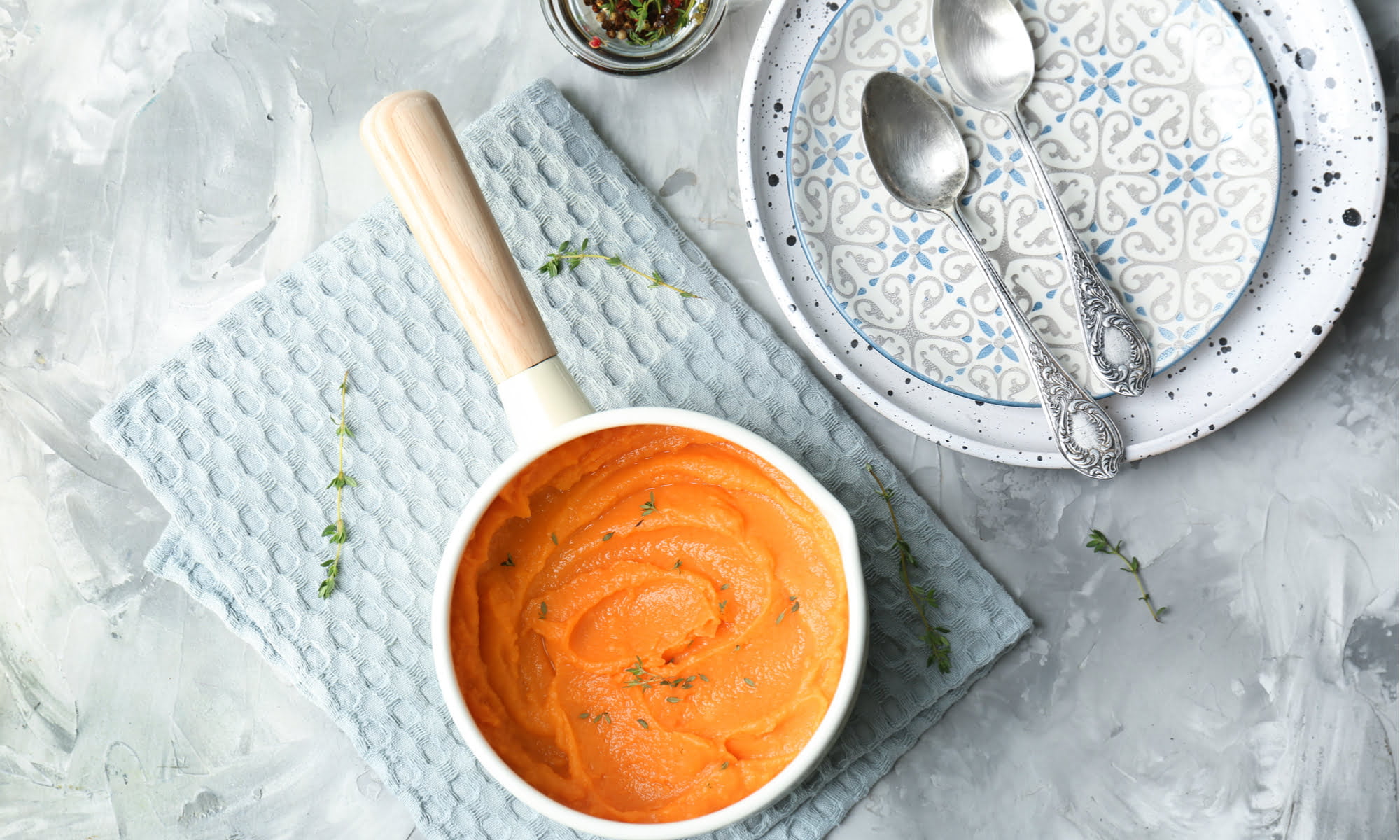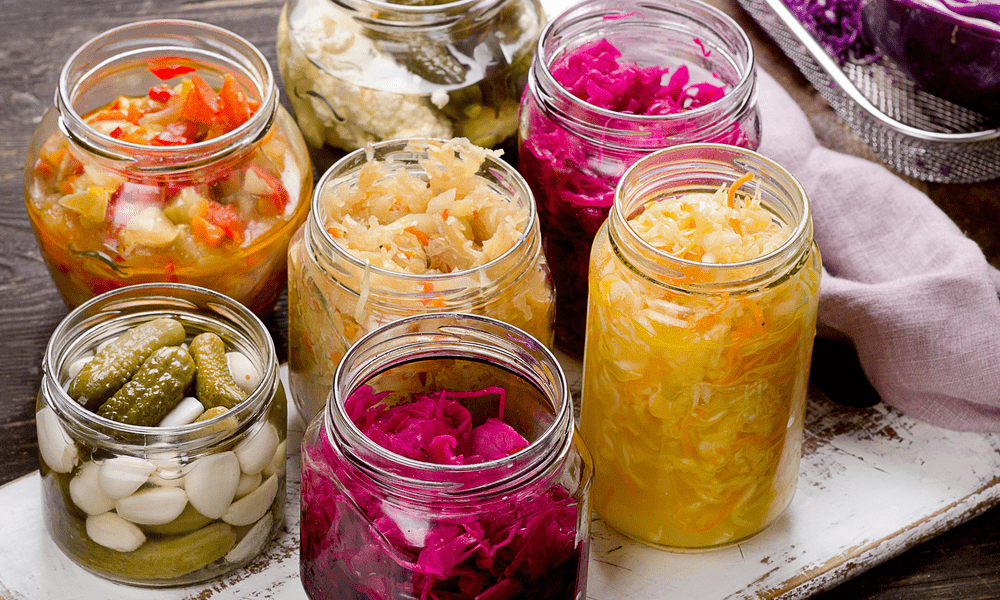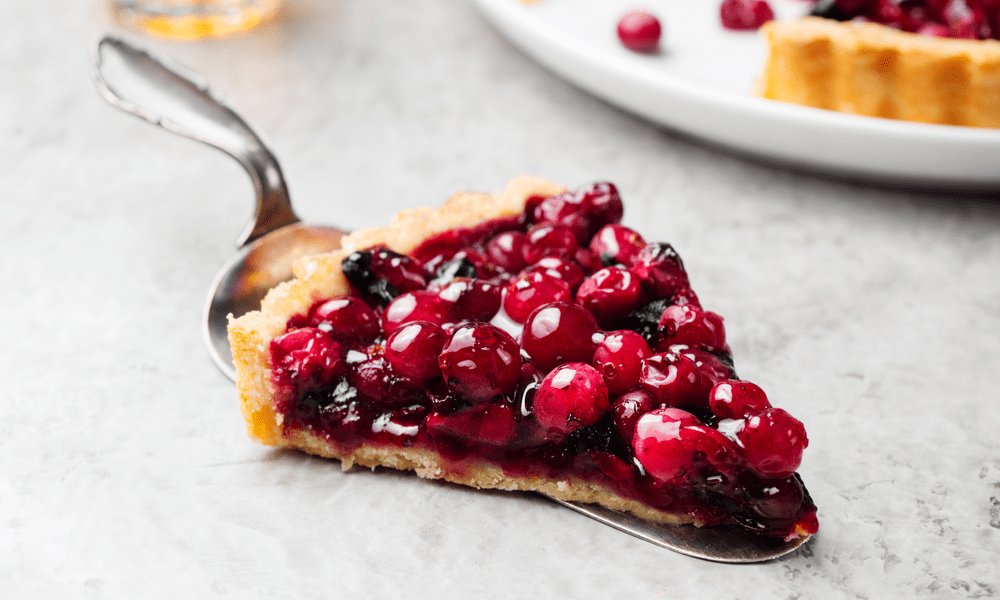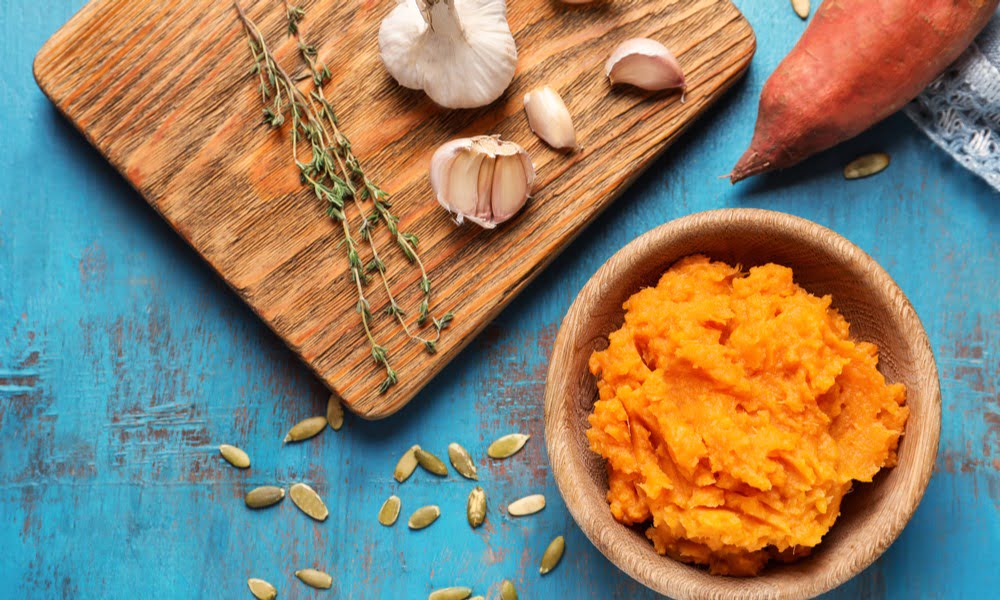Gut health has been a topic of much discussion, and for good reason: a healthy…
Of all the tubers, sweet potatoes are probably my favourite. I add them as a banana replacement in smoothies, use them in casseroles, and even add ‘em to veggie burgers for a subtly sweet and thicker consistency. Sometimes recipes call for yams instead of sweet potatoes though, and I always thought they were the same thing. However, after some research, I discovered that I was very, very wrong.
Yams Vs. Sweet Potatoes: What’s the Difference?
Yams and sweet potatoes are, in fact, very different.
- First, they have different origins. Yams are native to Africa, Asia, and are now common in Central America and the Caribbean. Sweet potatoes, on the other hand, are grown in the US.
- They also have very different flavours. Sweet potatoes are, well, sweet. They’re also more moist and juicier than yams. Yams are not sweet: they’re starchy and dry.
- As for their appearances, again – not similar. Yams have a white-ish flesh, are bigger and rounder, and are somewhat “hairy” on the outside. They’re not the cutest of tubers. Sweet potatoes are what we’re likely used to – orange or purple or white-ish flesh, and with a narrow shape and tapered ends.
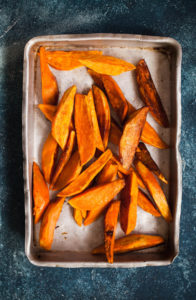
Sweet potatoes.
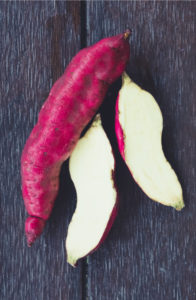
Again, sweet potatoes.
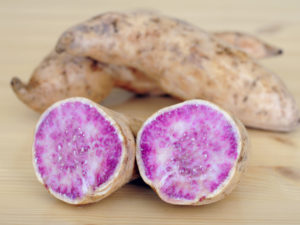
Yep, still sweet potatoes.
THESE are yams:
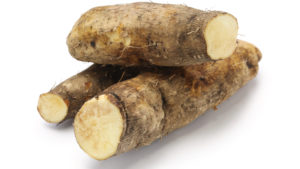
Note the “hairy” skin.
So, How Did It Get This Way?
The yam misnomer likely dates back to the 1920s, if not earlier. The word “yam” is likely derived from various West African languages and made its way over to the US during the slave trade era. When West African people were forcibly moved to the “new world”, they likely used the term yam to refer to the root vegetable they found in the US: the sweet potato. During the 30’s, US companies’ marketing tactics just stuck with it, and here we are today.
Recipes
The first uses sweet potatoes – NOT yams.
Sweet Potato Soup
This creamy and subtly sweet soup will make you forget allll about the yams vs. sweet potatoes debate.
Ingredients:
- 1 tbsp coconut oil
- 1/4 tsp pepper
- 4 cups broth
- 2 tbsp minced fresh parsley
- 1 onion chopped
- 2 cloves garlic, minced
- 3 sweet potatoes peeled and cubed (2 lbs;)
- 1/4 tsp salt
Instructions:
- In a large saucepan, heat oil over medium heat, saute garlic, onion, salt and pepper until softened, about 3 mins.
- Add sweet potatoes and stock. Bring to boil. Reduce heat, cover and simmer until potatoes are tender – about 20 mins.
- Puree soup until smooth. Return to clean saucepan and heat through.
- Top with chopped parsley.
Mashed Yams (Fufu)
This uses true yams – NOT sweet potatoes. It’s a common West African dish that’s similar to mashed potatoes, but with a slightly thicker consistency. Cassava can also replace white yams for this recipe.
Ingredients:
- 2 pounds cassava or white yams
- 2 tbsp butter (or vegan butter)
- Salt and pepper
- Optional: flavour with various spices.
Instructions:
- Place un-peeled yams in a large pot, cover with cold water and bring to a boil.
- Boil for 15-30 minutes, or until yams are cooked thoroughly.
- Drain. Let cool.
- Peel the yams and chop into large pieces. Place them in a large bowl with the butter and S&P.
- Mash well until smooth.
- Place in a bowl and, with a bit of water, begin to roll it into balls. It’s common to dip the balls into soups or sauces. Makes 4-6 servings.
So in conclusion, all those sweet potato-y type root veggies that you once thought were yams… are not. Unless you’ve eaten yams in African or Asian countries, there’s a very good chance you’ve actually never tried a true yam – at least not in Canada or the US. They’re mostly sweet potatoes over here. That being said, it’s still incredibly common to use the term yam when referring to orange-fleshed sweet potatoes. So common, that at Blush Lane sometimes we even use “yam” to describe these misunderstood tubers. Sometimes it’s less confusing to do so.
But enough of the semantics. Call your tubers whatever you like, but at least now you’re informed. Find sweet potatoes (unfortunately not true yams) at your nearest Blush Lane market!

